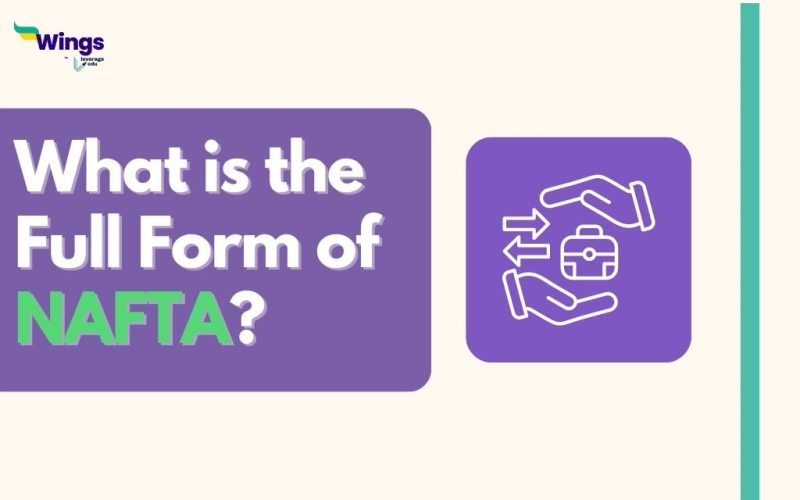The full form of NAFTA is the North American Free Trade Agreement. It was a landmark trade pact signed by Canada, Mexico, and the United States of America, aimed to revolutionise economic relations across the continent. Enacted in 1994, NAFTA eliminated tariffs, reduced trade barriers, and facilitated the movement of goods and services. Despite its ambitious goals, NAFTA faced both praise and criticism. While it boosted cross-border trade, critics argued it led to job outsourcing and environmental concerns. In 2020, NAFTA was replaced by the United States-Mexico-Canada Agreement (USMCA), marking a new era in North American trade relations.
Also Read: Internal Trade: Meaning, Types, Wholesale, Retail & More
Overview
Here is an overview of the North American Free Trade Agreement:
- NAFTA abolished tariffs on a majority of US exports bound for Mexico and Canada, gradually eliminating other tariffs over 14 years.
- It aimed to lift limitations on sectors like automobiles, computers, textiles, and agriculture.
- The accord safeguarded intellectual property rights (IPR) and detailed the easing of investment restrictions among the three nations.
- An additional pact in 1993 addressed worker rights and environmental conservation. Unlike the EU, NAFTA didn’t establish supranational entities or a superior legal framework; it remained a treaty in accordance with international law, distinct from the prior Canada-US Free Trade Agreement (FTA) of 1989.
Also Read: A Career in Patent Law in India
Scope of NAFTA
Here are some of the key provisions of NAFTA:
- Tariff Elimination: NAFTA aimed to eliminate tariffs on most goods traded among the three member countries, promoting free trade.
- Phased Tariff Reduction: Tariffs and duties were gradually reduced over a period of 14 years to ease the transition for industries.
- Trade Barriers: NAFTA targeted the removal of trade barriers and restrictions in various sectors, including automobiles, textiles, agriculture, and more.
- Intellectual Property Protection: The agreement included provisions to protect IPRs, such as patents, copyrights, and trademarks.
- Investment: NAFTA facilitated investment by removing restrictions and providing protections for investors from member countries.
- Environmental and Labour Standards: A supplemental agreement addressed concerns about labour rights and environmental protection, focusing on improved working conditions and sustainability.
- Dispute Resolution: NAFTA established mechanisms for resolving trade disputes between member countries, ensuring fair and timely resolutions.
- Market Access: The agreement granted enhanced market access for services and investments between Canada, Mexico, and the United States.
- Non-Tariff Barriers: In addition to tariffs, NAFTA aimed to reduce non-tariff barriers, such as import quotas and licensing requirements.
- National Treatment: Member countries were required to provide equal treatment to foreign investors and products as they would to domestic entities.
- Pharmaceuticals and Agriculture: The agreement addressed regulations related to pharmaceuticals and agriculture, facilitating trade in these sectors.
- Textile and Apparel Trade: NAFTA included specific provisions for textile and apparel trade, allowing for regional production and sourcing.
- Customs Procedures: The agreement aimed to simplify and streamline customs procedures, reducing delays and costs associated with cross-border trade.
Also Read: Forex Market & Trading Concepts for Beginners
This was all about the full form of NAFTA. To know about other interesting full forms, follow Leverage Edu now!!
 One app for all your study abroad needs
One app for all your study abroad needs













